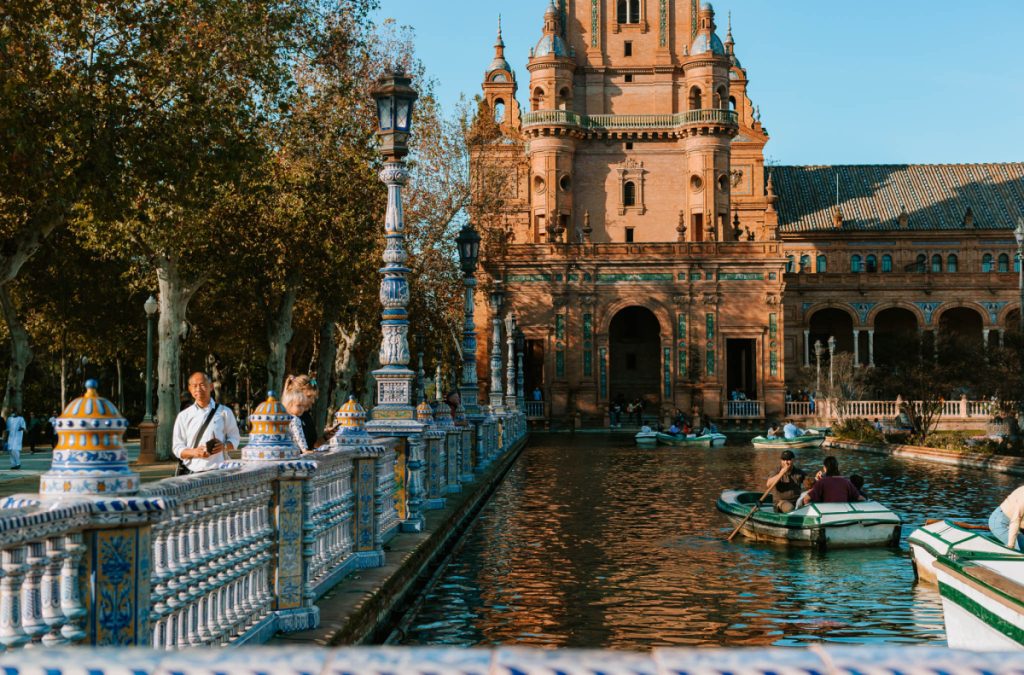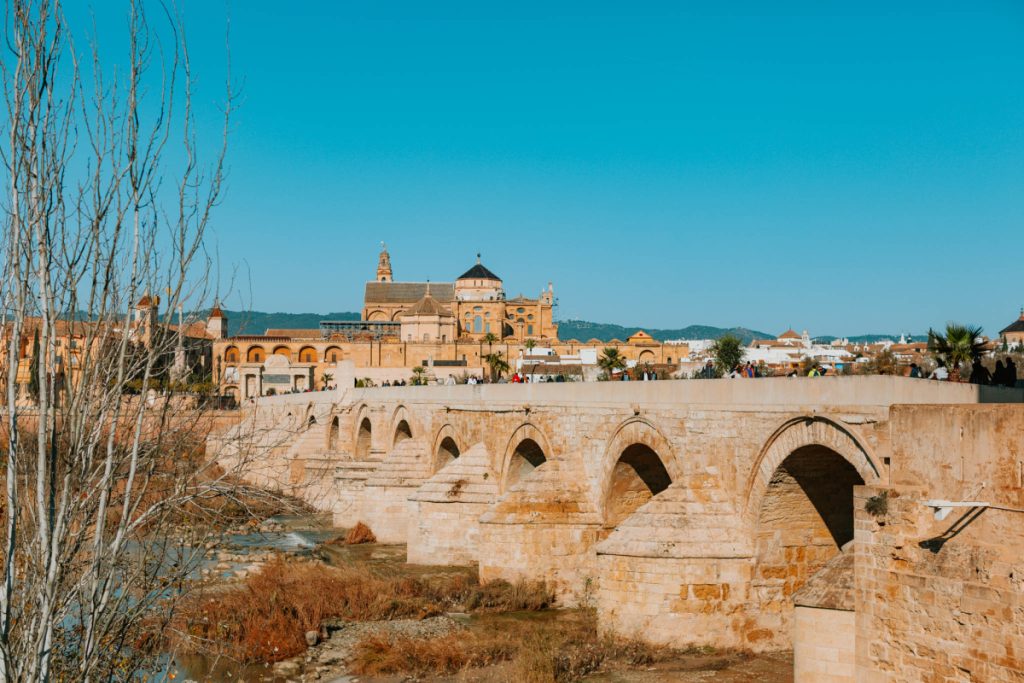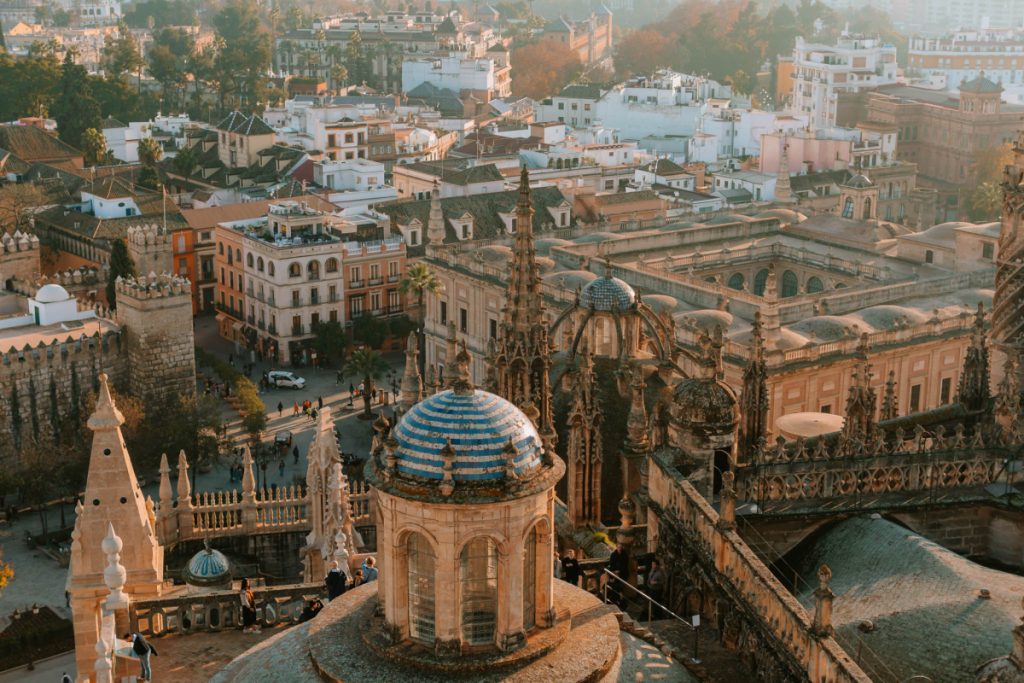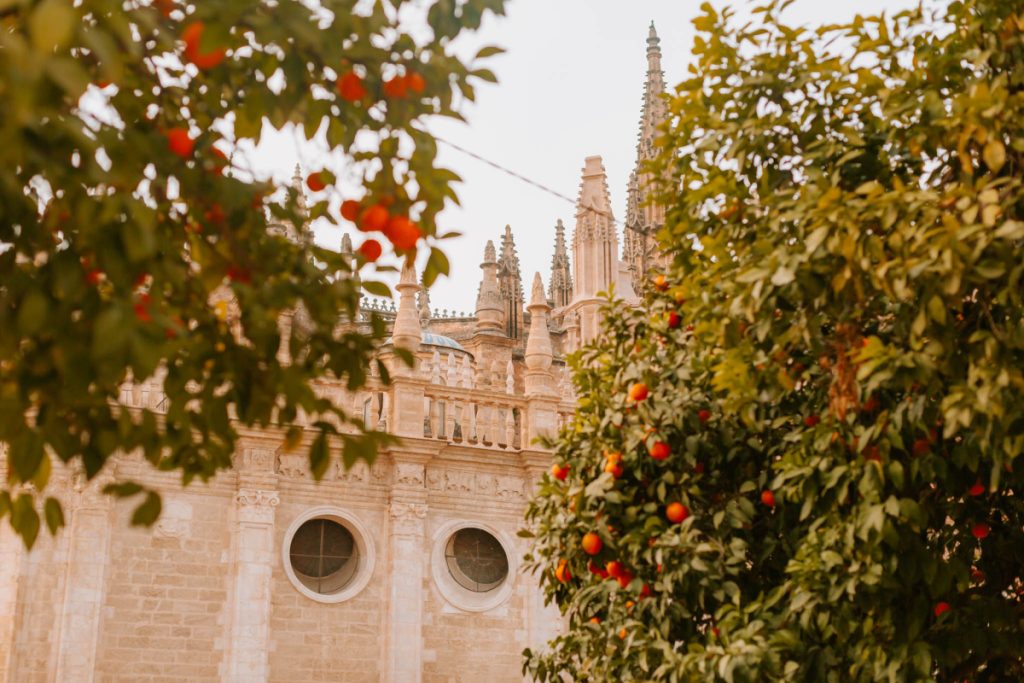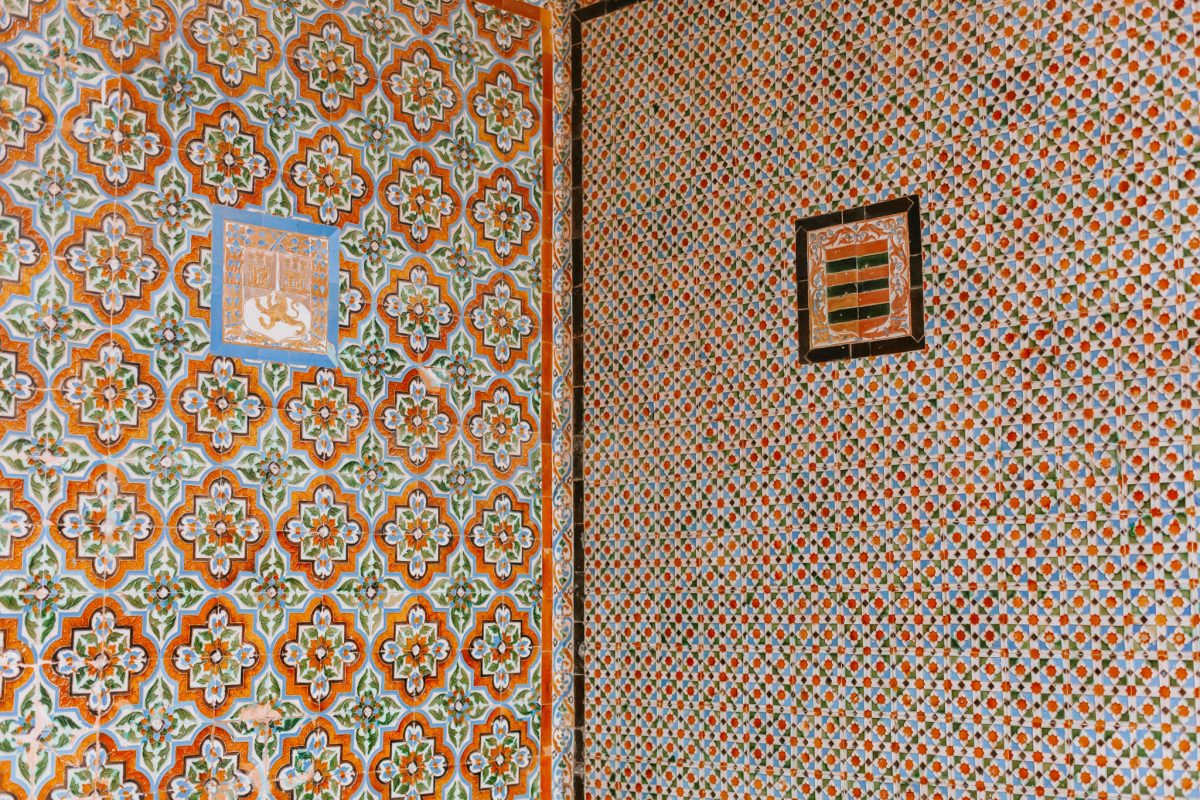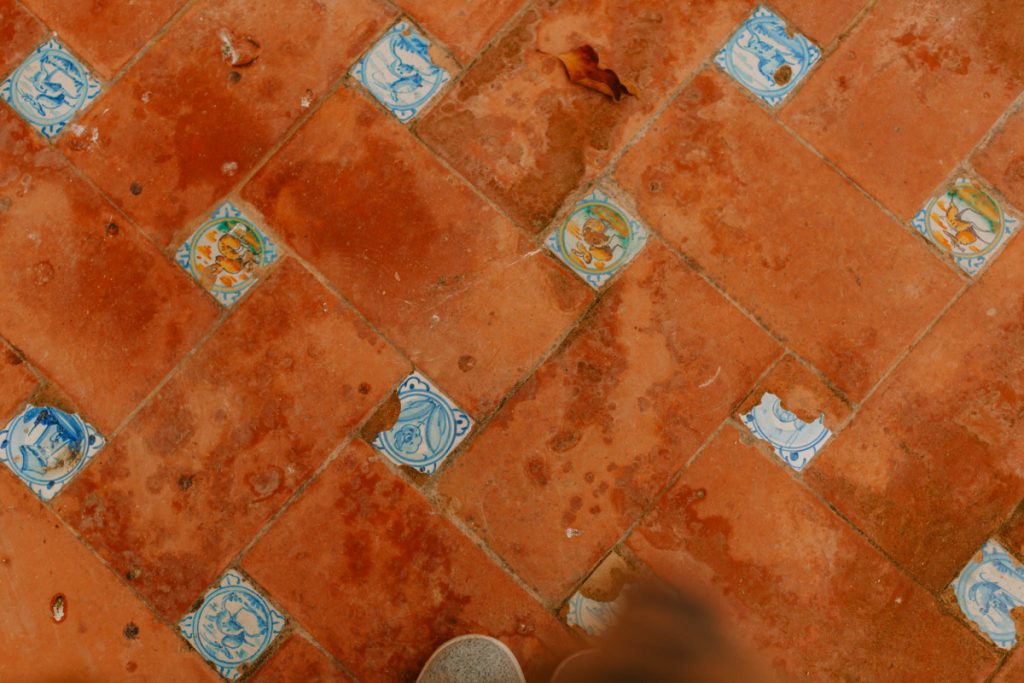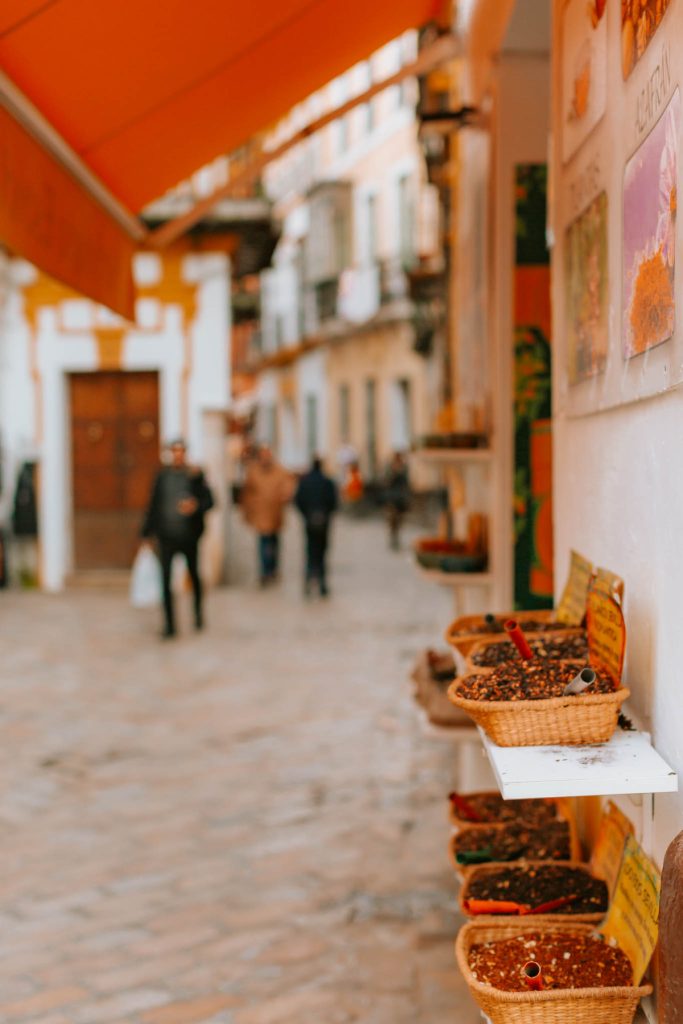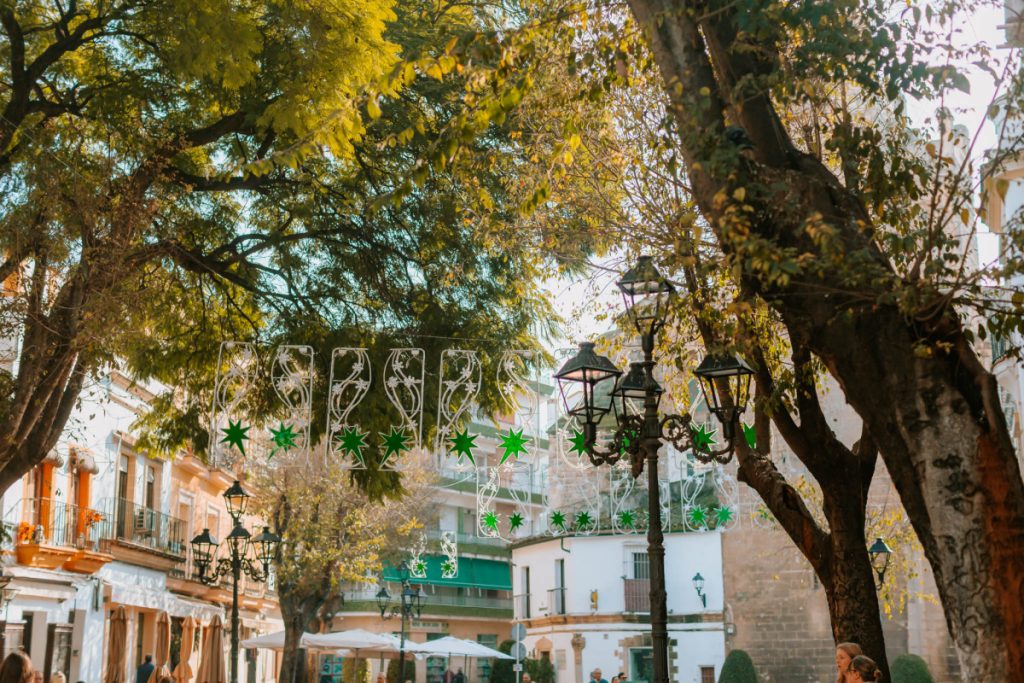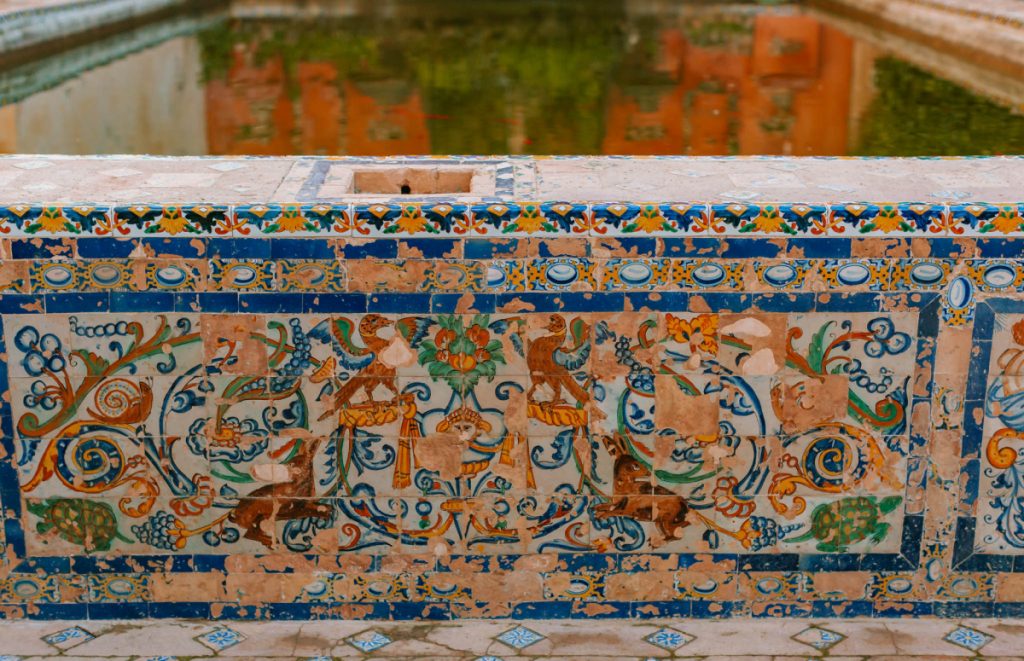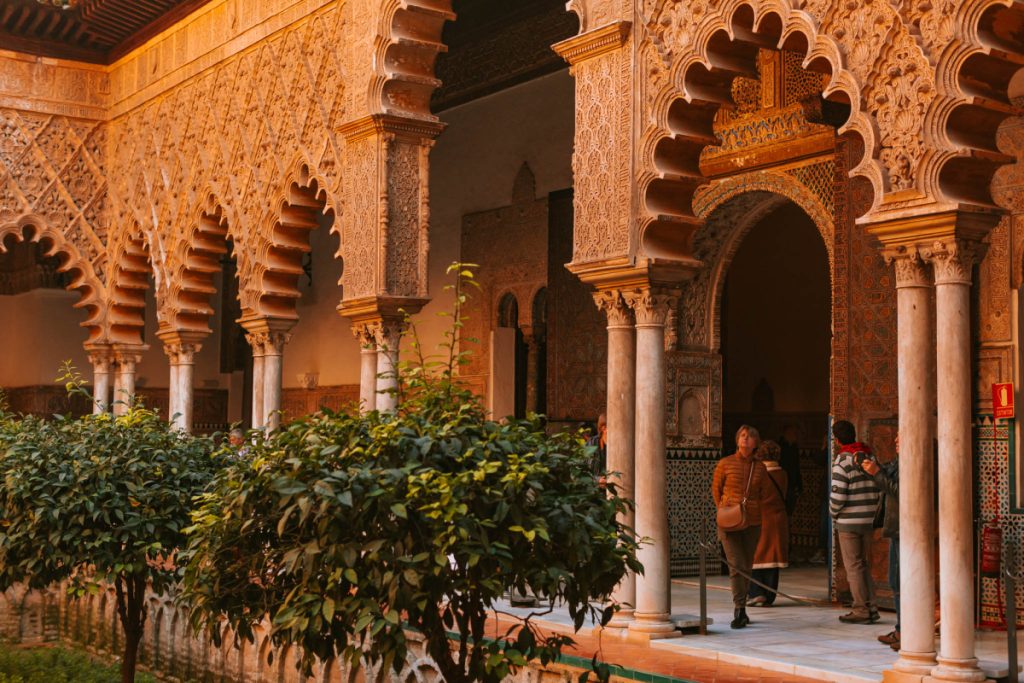Is it Worth Visiting Seville in Winter?
Seville, the capital of Andalucía, is located in southern Spain.
With a climate ranging from mild in winter, to swelteringly hot come summer, Seville makes for an ideal wintery break. Tucked safely away from the coastline, Seville avoids the cooler winds that its neighbours experience come December – and enjoys warm temperatures all year round.
Still bursting with colour and life, the average temperature in Seville in winter (November – February) ranges from 16 – 20 degrees. During these months, early morning and evening temperatures dip to between 6-10 degrees, which whilst chilly, remain far from freezing.
During our visit to Seville in December, we experienced unseasonably warm weather – with bright sunshine and blue skies everyday. Temperatures hit the heady heights of 22 degrees and we wandered the city’s streets in our t-shirts and sunglasses.
Given these milder temperatures, a trip to Seville also makes for an ideal break with a toddler. Olive was really able to enjoy the city, without me needing to worry about sunscreen or her overheating.
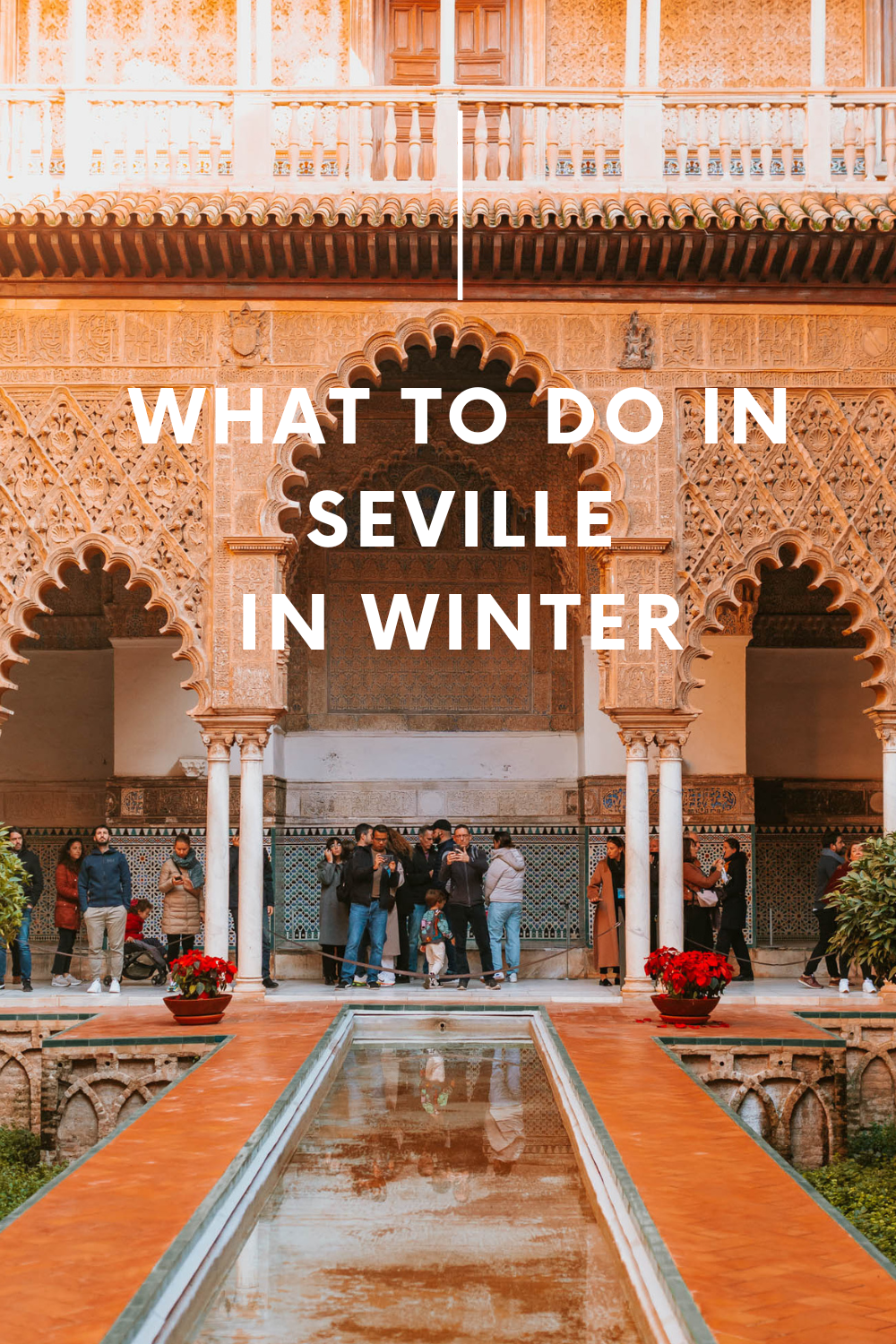
Visiting Seville at Christmas
We flew to Seville on the 27th December, when Christmas was still in full swing in Spain. Unlike the UK, Spain celebrates Christmas or ‘Navidad’ through to the 6th January, known as Three Kings’ Day. As such, the city very much remains alive with celebration and continues its festive cheer way into the new year.
During our trip, we noticed that although there were a lot less tourists in the city, Seville was still busy with Spanish families visiting loved ones. This made our visit feel even more authentic, as the city’s streets were crowded with local families enjoying the fair ground rides and dazzling lights.
Despite it being the Christmas period, all major attractions in Seville remained open. The only exception to this was New Year’s Eve afternoon and New Year’s Day, when some attractions closed in preparation for event celebrations.
What to Pack for Seville in Winter (November – February)
As mentioned above, Seville in winter is incredibly mild, but some strategic layering is still required during the winter months.
The mornings and evenings are still chilly and a coat – and even hat and gloves – might be required on occasion. By midday, however, you may well find yourself stripped down to just a t-shirt and jeans, with a sunhat and sunglasses on.
What to Pack for Seville in Winter:
- Lightweight coat (that’s easy to carry around if you take it off)
- Long sleeved top
- T-shirt
- Jeans/Trousers
- Jumper
- Sunglasses
- Comfortable shoes for exploring
- Scarf, or pashmina, to keep warm with in mornings or evenings
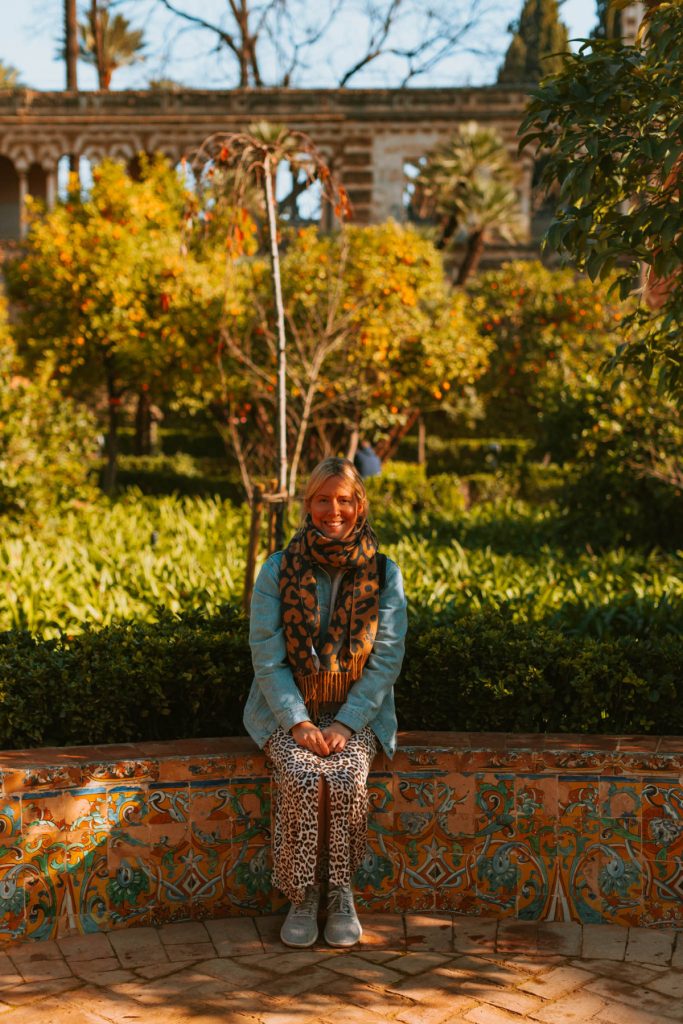
Looking at the weather forecast before I travelled, I didn’t account for the cold mornings and would definitely have brought a more wintery coat with me, had I known about the chill in the air.
Having said that, by the time lunch time rolled around, I was more than warm enough in a midi-skirt, t-shirt and denim jacket.
My biggest tip for visiting Seville in winter? Plenty of layers.
How to Spend 5 Days in Seville in Winter
Having established that Seville makes for an ideal winter break, here’s a five day guide to the city. We enjoyed all of the activities listed below with our toddler, however, if you’re looking for more ideas regarding what to do in Seville with kids, take a look at our Seville with Toddlers or Children guide.
Day 1 visiting Seville in Winter
Arriving bright and early in Seville, we were ready to make the most of our first full day in the city. With the sun shining brightly, and our winter coats quickly discarded, it was time to head to our favourite spot in the city.
1. Visit Parque de María Luisa and Plaza de España
Entry: Free
Parque de María Luisa and the accompanying Plaza Espagña are regarded as the lungs of Seville. A place to escape the hustle and bustle of the city, this park is filled with duck ponds, pagodas, winding paths, shady trees and – the crowning jewel – Plaza de Espagña.
Built in 1929, the Plaza boasts a central fountain, mini-canals for boat rides, bright blue Seville tiles covering multiple bridges, and plenty of people-watching opportunities – with live bands, flamenco dancers and bubble blowers surrounding you.
The ideal place to slowly ease yourself into life in Seville, grab an ice cream and warm up after escaping a bitingly cold UK.
2. Walk the River Back to the Historic City
After a leisurely morning enjoying the park, it’s time to make your way back to Seville’s historic centre. To do this, you can enjoy a walk along the Guadalquivir river, which crosses the entirety of Andalusia.
Peppered with bars and restaurants, the walk along this riverside is a lively one.
If you have time, head over the river to Triana, the original quarter of the city’s Roma people, and one of the birthplaces of Flamenco. Wander its main riverside street, Calle del Bétis, which is ideal for lunchtime tapas or atmospheric evening drinks.
During our visit to Seville in winter, the riverside streets transported us back to the peak of summer, with crowds sitting along the riverbanks enjoying alfresco drinks in the golden afternoon sunshine.
3. See the City from Above at Las Setas Seville (formally known as Metropol Parasol)
Entry: €3 per person
Before the sun sets on the city (around 6.15pm in December), it’s time to explore the central district of Seville from a unique vantage point. Metropol Parasol (now known as Las Setas) is a vast wooden structure, resembling a ‘giant waffle’, that sits in the middle of Seville’s most traditional shopping centres.
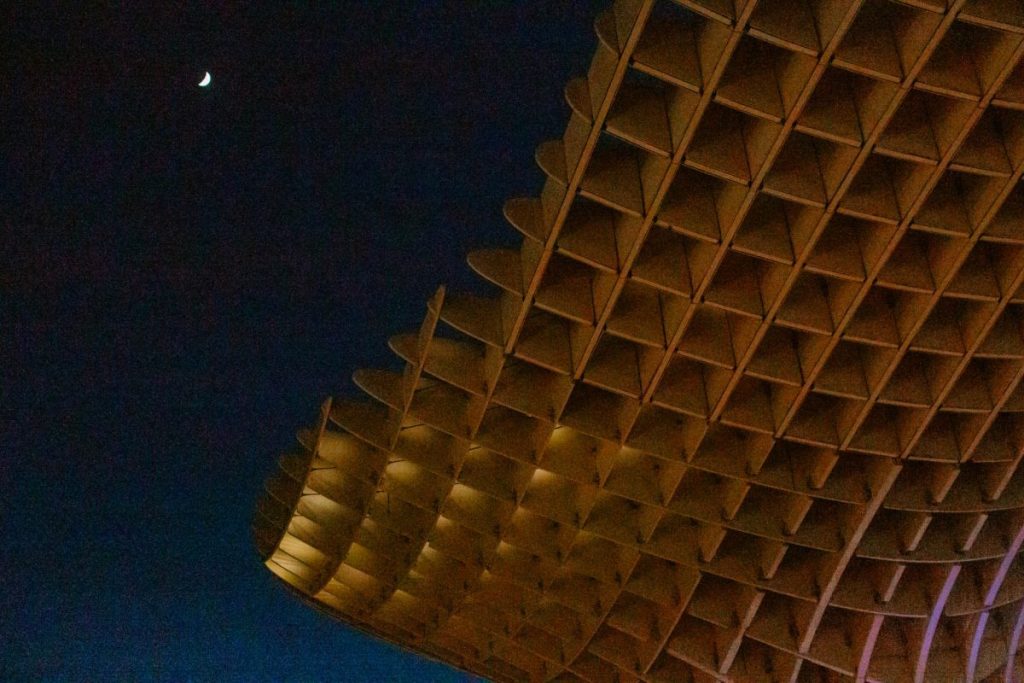
Built in 2011, Las Setas (The Mushrooms) is said to be the largest wooden-framed structure in the world. For a panoramic walk, catch the lift to the top of the structure and enjoy its winding walkways.
During our visit to Seville in winter, the Metropol Parasol was alive with fairground rides and stalls, making for a super fun evening with a toddler.
Quite the improvement from the deserted car park that was once here.
Day 2 of Visiting Seville in Winter: A Day Trip to Córdoba
Train fare: this is dependent on how early you book and whether you take the fast or slow train. To save money, book directly through the rail provider.
On day two of your winter break to Seville, it’s time to hop on a train and explore one of its equally beautiful and historic neighbours: Córdoba. You can catch the train to Córdoba from Seville’s central station and (if you catch a fast train) can be there in just 45 minutes.
Below is a brief round-up of the best things to see in the city. For a more detailed guide, read our day trip to Córdoba blog post.
1. Visit Córdoba’s Mosque-Cathedral (Mesquita)
Price: €10 for adults €5 euros for children
Tip: Queues can be long and entry isn’t guaranteed, so pre-book your visit.
The world-famous Mosque-Cathedral of Córdoba should come top of any visitor’s list to the city. A building that has housed both Muslim and Christian worship, the Mosque-Cathedral is a unique and truly breathtaking mix of architecture. From the seemingly endless lofty arches of the original Mosque, through to a Christian altar that took 250 years to complete, you’ll find yourself lost in this mesmerising building.
Book your tickets to Córdoba’s Mosque-Cathedral
2. Visit Callejas de las Flores
For those who enjoy visiting a city’s prettier sights, head to Callejas de las Flores. A small, but perfectly formed, street that leads to an idyllic courtyard, this is perhaps one of the most popular spots in the city.
Why I hear you cry?
Well, for the many, many geranium and carnation flower pots that adorn the wall and patio space of Callejas de las Flores. For those looking for postcard-worthy views of the Mosque-Cathedral’s bell tower, look down the passageway from the top of the courtyard. Here, you’ll find the tower placed perfectly between the buildings, either side of the passageway.
3. Córdoba’s Roman Bridge (Puente Romano)
A stroll along Córdoba’s Roman Bridge is a must when visiting the city. Providing excellent views of the city from the southern side, the bridge is a brilliant place for those looking to take photos of Córdoba’s historic cityscape.
Tip: walk to the south end of Córdoba’s Roman Bridge and you’ll find Torre de la Calahorra. The €4 entry is worth the panoramic views you’ll find at the top of the tower.
Read our full guide to a day trip to Córdoba from Seville
4. Enjoy Palacio de Viana
Price: €8 for the whole house (entry to the 12 patios is free)
My favourite spot in Córdoba was Palacio de Viana.
A renaissance Palace, complete with 12 perfectly curated flower-filled patios, Palacio de Viana is a place to come for pure tranquillity. As we were visiting with a napping toddler, we chose to just visit the 12 patios (free entry), but the interior of the Palace looked equally beautiful and well-worth the €8 entrance fee.
Book your tickets for Palacio de Viana
Day 3 of Visiting Seville in Winter
For your third day in Seville, it’s time to tick off more of the city’s major sites and visit its most vibrant neighbourhood.
1. Visit Seville’s Cathedral
Entry: €10 or €16 for a guided rooftop tour (children go free). An additional €3 for an audio guide (highly recommended).
Tip: we had no issue booking tickets to the cathedral on our fist visit to Seville, but during our most recent trip, we struggled to find a free slot. Luckily, we managed to get some tickets for our penultimate day in the city but I would strongly advisebooking well in advance.
Indeed, it would be near criminal to visit Seville without visiting its glorious cathedral and Giralda (clock tower). The world’s largest Gothic cathedral, the building was built between 1434 – 1517, over the remains of the city’s former mosque.
Legend has it, the authority makers of the city declared that they wanted to build a cathedral that was ‘so large future generations will think we were mad!’ Looking at the cathedral now, I don’t think those original citizens were mad at all – they were geniuses.
The building and its accompanying buildings and patios are absolutely incredible to witness.
A few sights not to miss while touring Seville’s cathedral include:
Giralda (Bell Tower)
The cathedral’s Bell Tower, the Giralda, is an unexpectedly easy climb. Unlike many European clock or bell towers, Seville’s Giralda is a modest slope upwards over 37 floors – and a final ladder up to the very top. It’s said that a slope was chosen over stairs, so that men on horseback could ride to the top.
The views out of each side of the bell tower are spectacular, but make sure you have a peep out over the buildings of the cathedral, for beautiful views of the orange tree patio below and the iconic white and blue striped dome.
The Tomb of Christopher Columbus
Inside Seville’s cathedral, you will discover the tomb of Christopher Columbus. The monument is said to contain the remains of Columbus, after he was moved repeatedly around Spain after his death in 1506. Despite suggestions that his bones in fact rest at Santo Domingo, DNA testing done on them in 2006 was a match with the DNA taken from the bones of Columbus’ brother.
The conclusion? The bones of the explorer really do rest here.
Patio de los Naranjos
My favourite spot in Seville’s Cathedral is the peaceful Patio de los Naranjos. Filled with 66 orange trees, the patio was once the original mosque’s main courtyard is absolutely stunning.
Book your tickets to Seville’s cathedral
2. Visit La Casa de Pilatos (Pilates House)
Entry: €10
On our first visit to Seville, we didn’t visit pretty little Pilates House, as it’s one of the city’s lesser known attractions. A traditional Andalusian Palace and once one of the largest private residences in Seville, Pilates House is, however, well-worth a visit.
You can tour both the interior and exterior of the Palace, including its chapel, a beautiful staircase and even its extensive gardens, complete with Spanish tiles and soaring archways.
Book your tickets to Pilates House
3. Explore Barrio Santa Cruz
After a morning exploring two of the prettiest places in Seville, it’s time to head to (in my opinion) the city’s most beautiful neighbourhoods, Santa Cruz. One of the oldest neighbourhoods in Seville, and once the Jewish Quarter of the medieval city, Santa Cruz is a maze of narrow historic streets.
Alive with tapas bars, boutique shops and sun drenched squares filled with orange trees, Santa Cruz is definitely a place to wile away an afternoon.
Home to the cathedral and Alcazar, and bordered by the beautiful Jardines de Murillo, this is a part of the city that you could spend an entire week in. Indeed, Santa Cruz is the best place to stop for authentic tapas or drinks, all whilst watching the world go by.
Book your walking tour of the Santa Cruz neighbourhood
4. Tapas at Bar las Teresas
While you’re in the Santa Cruz neighbourhood, be sure to stop for traditional tapas at Bar las Teresas.
The interior of this famous bar is adorned with hanging Jamon joints and portraits of handsome matadors. As is often the case, it was standing room only when we visited, but we were fortunately able to get a seat outside.
This turned out to be ideal – allowing us to enjoy the streets of Santa Cruz, as we indulged in plates of delicious tapas.
Day 4 of Visiting Seville in Winter: Day trip to Jerez de la Frontera
Train fare: £10 per person (return)
On day four of your winter’s break to Seville, it’s time to catch the train again and head to Jerez de la Frontera.
An hour’s journey from Seville, Jerez de la Frontera often gets overlooked for other nearby cities, such as Cadiz. Having visited the city, however, I could not recommend a day trip to Jerez de la Frontera enough. It was an absolutely beautiful city to explore and I wish I had had far longer to enjoy it all.
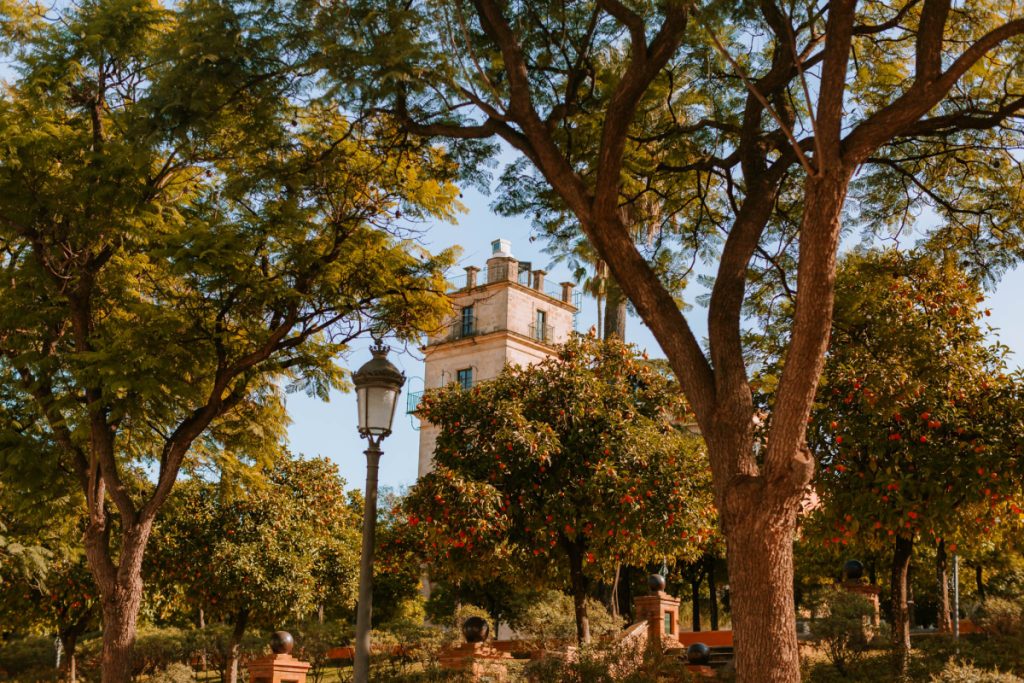
During your day exploring Jerez, make sure you take the time to enjoy the following sights of the city:
Catedral de San Salvador (Cathedral)
Entrance fee: €6
There’s no better way to get to know a city than by climbing its clock tower. This is exactly what we did when we first arrived in Jerez de la Frontera, heading straight to its cathedral and handsome clock tower.
Jerez’s Cathedral, which almost looks like a miniature version of Seville’s, is an impressive amalgamation of Baroque, Neoclassical and Gothic styles. It even has its own miniature orange tree patio, which was so lovely to explore in the early afternoon sun.
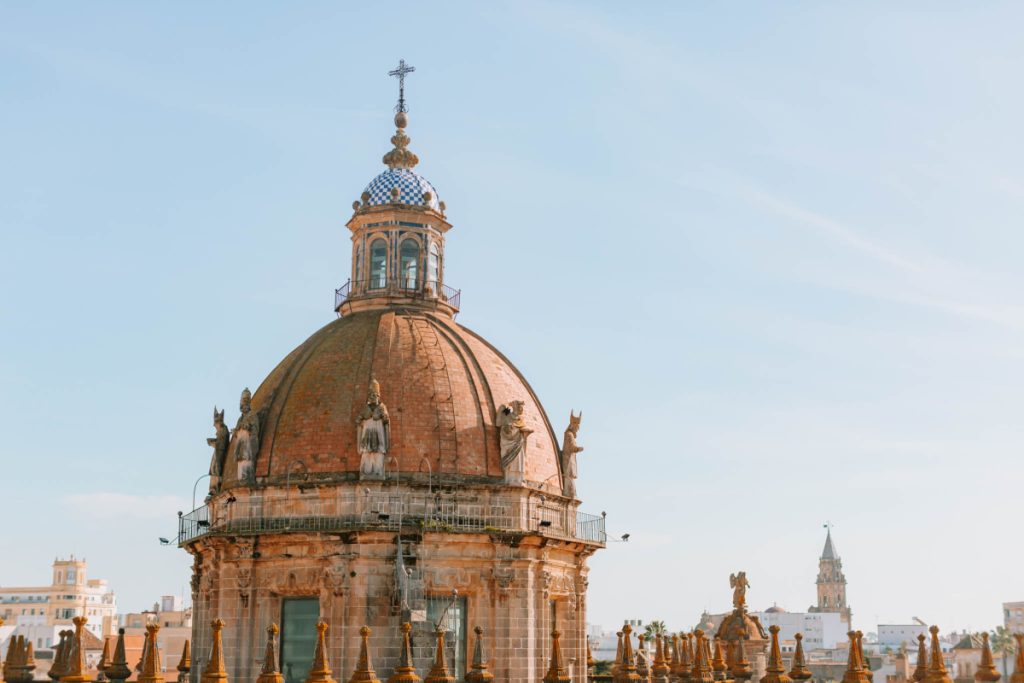 After exploring the cathedral, it’s time to climb its modest clock tower. Distinctly quieter than Seville’s Giralda, a walk up this tower is unexpectedly enjoyable and the views of the city (and the cathedral’s dome) completely ignited my love affair with Jerez.
After exploring the cathedral, it’s time to climb its modest clock tower. Distinctly quieter than Seville’s Giralda, a walk up this tower is unexpectedly enjoyable and the views of the city (and the cathedral’s dome) completely ignited my love affair with Jerez.
Book your tickets for a guided tour of Jerez de la Frontera
2. Tour and enjoy a tasting at one of the city’s many Sherry Bodegas (Winearies)
No trip to Jerez de la Frontera would be complete without enjoying a tipple at one of its many ‘Bodegas’. Jerez, literally meaning ‘Sherry’, is the first stop on the famed Sherry Triangle and is one of the world’s most famous sherry producers.
As we were visiting Seville with our toddler, a nice long afternoon of sherry tasting was sadly out of the question. We did, however, enjoy a delicious lunch at the famed Tío Pepe Bodegas, at their Pedro Nolasco restaurant. This permitted us a magical glimpse at the bodegas’ vine-covered cobbled paths, which were absolutely enchanting.
If you’re lucky enough to have some child-free time to enjoy a sherry tasting tour, here’s just a few suggestions of bodegas to visit in Jerez de la Frontera:
Price: €35 per person
Known for its extra-aged sherries (20-30 years), Bodegas Tradicíon also boasts the Colección Joaquín Rivero – a private 14th- 19th century Spanish art collection. The tours last 1.5 – 2 hours, including tastings.
Bodegas González–Byass (Tío Pepe)
Price: €16 upwards
Founded in 1835, González-Bypass is one of Jerez’ biggest sherry houses. There are daily tours (which we sadly couldn’t do with a toddler) that offer two tastings and tapas. For those looking for a longer lunch, we can highly recommend the bodegas’ luxury restaurant, Pedro Nolasco.
Price: €8 upwards
Bodegas Sandeman was created by a Scot in 1790 and offers 4 daily tours, with 3 sherry tastings. Cheap, but does the job.
Price: €18 for the ‘standard visit’ or €28 for the ‘complete tastings’ tour
This incredibly handsome bodega is on my list for when I inevitably return to the city, on a child-free escape. You will need to pre-book your tour to enter this wonderland of vineyards, with the price including five wine tastings and a vermouth. For a more premium tour, the ‘complete tastings’ costs €28, and includes seven wines and two vermouths.
3. Alcázar of Jerez de la Fontera
Entry: €5 (€7 if you’re looking to take photos)
Jerez’s 11th-12th century Alcázar may not be as spectacular as Seville’s, but it’s still very much worth a visit. Top sights include the original mosque, which was turned into a a chapel by Alfonso X in 1264. Similar to the mosque-cathedral in Córdoba, the mosque retains the original fountain and horseshoe arches.
For a bird’s-eye view of Jerez de la Frontera, climb the tower of Palacio Villavicencio, before finishing in the Alcázar’s serene Patio de Armas (gardens).
4. Visit the Royal Andalusian School of Equestrian Art
Price: £13 upwards
Sherry aside, the main reason I wanted to visit Jerez de la Frontera was so that I could take my horse-obsessed toddler to the Royal Andalusian School of Equestrian Art. An institution dedicated to the preservation of traditional Spanish equestrian arts, it’s one of the most prestigious riding schools in the world.
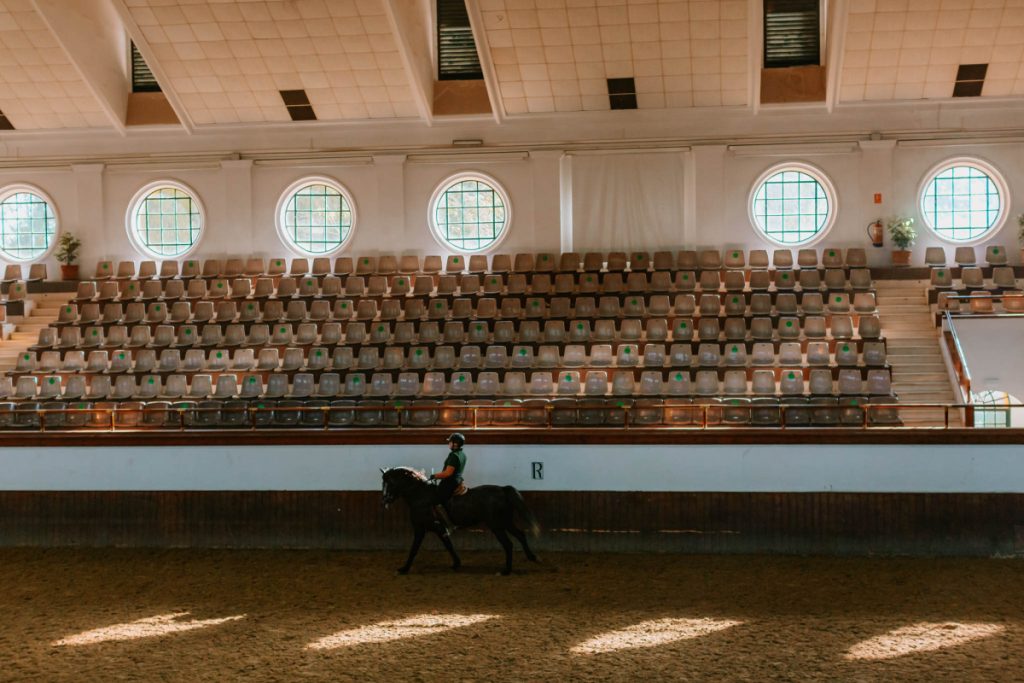
Make sure you visit in the morning, when you can watch riders practising in the arena, before enjoying the tour of the equestrian centre at 11.15am. The tour was fascinating and took us into the tack room, to the stables to meet some of the horses (one being a recent Olympic gold medallist) and to meet some of the students on site.
The Royal Andalusian School of Equestrian Art is also a university, for 16-18 year olds. The degrees on offer relate to horsemanship and include saddlery, blacksmithing and coach driving.
Day 5 Visiting Seville in Winter
On your final day visiting Seville in winter, it’s time to make the most of the winter sun and enjoy some of the city’s prettiest and most relaxing sights.
1. Visit Real Alcázar, Seville
Entry: €11 adult/€3 children
There is no better way to spend a morning in Seville than exploring Seville’s Real Alcázar. Visiting the Palace was the highlight of my first trip to the city in 2014 and I couldn’t wait to return – my toddler now in tow.
Book your tickets to Real Alcázar, Seville
Seville’s Royal Palace is truly intoxicating and an absolute paradise for garden lovers. During our first visit to the city, a large portion of the Alcázar was closed due to the filming of Game of Thrones, and so it was a real treat to finally explore them on our return visit.
The Alcázar began life as a fort in the 10th century. The first portion of the Palace was then built in the 11th century, before being continually reworked until 1366, when Pedro I created his dazzling namesake palace, which we see today.
There can be long queues for Real Alcázar and entry isn’t guaranteed, so I would strongly advise that you book ahead.
2. Float in the Ancient Baths of Aire
Entry: dependent on the package, prices range from €65 upwards
After a busy few days exploring Seville and its equally beautiful neighbours, it’s time to relax. The Aire Ancient Baths is a truly indulgent activity to do in Seville and I was lucky to visit on both of my trips to the city.
Set deep below the city, situated around an Andaluz-style courtyard, the candlelit ancient baths of Aire offer visitors a place to come and unwind. There are many bath rooms available, including salt baths, hot and cold baths, a hamman style steam room and jacuzzi baths.
If you’re looking to add a little extra to your visit, you can also book a massage or other luxurious treatments. My package was for 120 minutes and included an incredibly relaxing massage – heavenly.
Book your visit to Aire Ancient Baths, Seville
3. Watch a Traditional Flamenco Show
There’s no better way to end your trip to Seville in winter than with a blood-pumping Flamenco show. By far, the most popular venue to watch an evening’s Flamenco is the Casa de la Memoria. Housed in the old stables of the 16th-century Palacio de la Condesa de Lebrija, the shows are a crowded, authentic and fun affair.
Other worthy Flamenco venues in the city include Tablao Flamenco (two nightly shows) and if you’re looking for dinner included, Tabloa El Arenal is the best of the lot.







